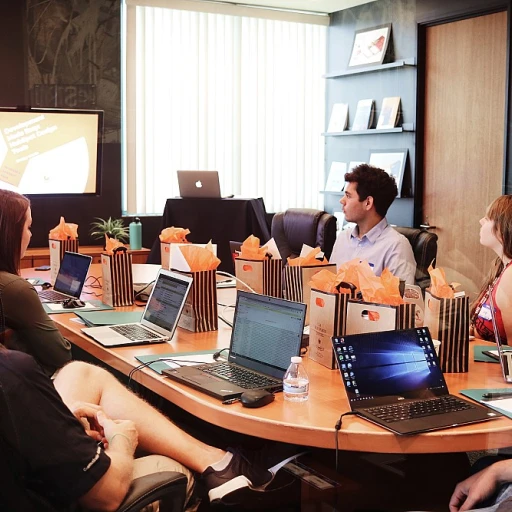Understanding the Importance of DEI in HR Communication
Building the Foundation for an Inclusive HR Culture
The journey towards fostering diversity, equity, and inclusion (DEI) within human resources communication begins with understanding its crucial role in shaping employee engagement and workplace culture. DEI is not simply a checkbox on an organizational strategy; it acts as the cornerstone for creating an equitable and inclusive environment where employees from diverse backgrounds feel valued and heard.
Organizations that prioritize DEI in their communication efforts are better equipped to nurture a workplace that not only celebrates diversity but also facilitates genuine inclusion. This commitment to DEI helps companies to respond more effectively to the needs of underrepresented groups and promotes a culture where all employees feel a sense of belonging and empowerment.
To foster such an environment, HR departments must first understand the multifaceted nature of diversity and recognize how equity and inclusion play into decision making processes. The focus should be on crafting messages that resonate with a broad spectrum of perspectives, ensuring that every employee, regardless of their background, is considered in the conversation.
Moreover, inclusive messaging and language are keys to reinforcing a welcoming atmosphere. By deliberately choosing words that reflect respect and understanding, organizations can enhance their DEI strategy and ensure that their communication supports a diverse workforce.
Ultimately, the dedication to incorporating DEI into HR communication is more than an initiative; it's an ongoing effort that requires constant evaluation and adaptation. As we explore the subsequent sections, we will delve into strategies for assessing current practices, refining messaging, and implementing training to ensure that DEI remains at the forefront of workplace communication.
Assessing Current Communication Practices
Analyzing Your Communication Approach
Assessing current communication practices within an organization is crucial for enhancing diversity, equity, and inclusion (DEI) efforts. It provides a foundational understanding of how messages are being conveyed and received across the workplace. Here are some key aspects to consider when evaluating your current strategies:- Employee Engagement Surveys: Surveys can help identify how employees feel about the existing communication culture, their engagement levels, and the effectiveness of current DEI initiatives. Feedback is essential to understanding the range of perspectives within the organization.
- Identifying Communication Barriers: Review if there are any barriers preventing employees, especially those from underrepresented groups, from participating fully in conversations. Language barriers, technological access issues, and cultural misunderstandings can all hinder inclusive communication.
- Assessing Communication Channels: Analyze the various channels used for communication. Ensure they are accessible and accommodate a diverse workforce. For instance, some employees may prefer digital platforms, while others might rely on face-to-face interactions.
- Evaluating DEI Messaging: Scrutinize current messaging to ensure it aligns with your DEI goals. In particular, look at whether inclusive language is being used and if the content addresses the diversity within your organization.
Crafting Inclusive Messaging
Creating Messaging that Reflects Diversity and Inclusion
When crafting inclusive messaging in human resources communication, it is crucial to ensure that the language used reflects the values of diversity, equity, and inclusion (DEI). This requires an understanding of how language can either enhance or hinder these efforts. By focusing on the key elements of inclusive language, organizations can create a more welcoming and respectful workplace culture.Emphasizing Inclusive Language and Practices
To effectively communicate with a diverse workforce, it is important to:- Use gender-neutral terms and avoid stereotypes that perpetuate bias.
- Employ language that acknowledges and respects the diverse identities of employees.
- Highlight the cultural richness and varied perspectives that different demographic groups bring to the organization.
Promoting Inclusion through Employee Resource Groups
Employee resource groups play a significant role in shaping an inclusive workplace. These groups help diverse employees connect, share experiences, and influence DEI initiatives within the organization. Promoting these groups through HR communication channels can be an effective way to encourage wider participation and engagement. Employee resource groups also serve as valuable platforms for gathering feedback and insights on how to improve DEI communication strategies.Aligning Messages with Organizational Values
It's crucial for HR teams to ensure that all communications, from announcements to policy updates, align with the company's commitment to diversity, equity, and inclusion. This alignment reinforces the organization's values and fosters a strong sense of equity inclusion among employees. Identifying messaging that mirrors the organizational culture and DEI efforts can effectively reinforce the importance of these initiatives. For more tips on enhancing communication in your organization, explore how the Employee of the Month program can be revamped to support inclusive practices.Implementing DEI Training for HR Teams
Fostering a Culture of DEI Through Training
In order to successfully enhance diversity, equity, and inclusion in workplace communications, implementing comprehensive DEI training for human resources teams is vital. DEI-training equips HR professionals with the necessary skills and understanding to communicate effectively and inclusively with all employees, particularly those from underrepresented groups. A thoughtful DEI strategy in workplace culture not only aids in improving communication but also contributes to a more inclusive workplace where employees feel valued and heard. Here are some key areas to focus on:- Highlighting the Importance of Inclusive Language: DEI training should emphasize using inclusive language in all HR communications. This encourages a culture of respect and ensures that diverse groups feel recognized and understood.
- Promoting Employee Resource Groups (ERGs): ERGs play a crucial role in nurturing diverse workforce cultures and can be a powerful tool within DEI efforts. HR teams should be trained on how to effectively support these groups to help enhance collaboration and inclusivity across the organization.
- Equipping HR with Decision-Making Skills: DEI training should also focus on decision-making skills which promote equity and inclusion. This encompasses understanding diverse perspectives and making conscious choices that align with DEI initiatives.
- Tailoring Training Programs to Specific Needs: Recognize that a one-size-fits-all approach isn’t always beneficial. Tailor DEI training programs to address the specific needs and challenges of your particular organization to better support diverse employees.
Leveraging Technology for Inclusive Communication
Utilizing Technology to Foster an Inclusive Culture
In the modern workplace, leveraging technology is pivotal in promoting diversity, equity, and inclusion (DEI) in human resources communication. By integrating advanced tools, organizations can ensure that their communication strategies are inclusive and accessible to all employees, regardless of their background or role within the company.
One effective approach is to employ digital platforms that support diverse communication needs. For instance, utilizing software that offers real-time translation services can help bridge language barriers, ensuring that employees from underrepresented groups feel included in organizational dialogues. Additionally, implementing tools that provide closed captioning and transcription services can make meetings and presentations more accessible to employees with hearing impairments.
Enhancing Employee Engagement through Digital Channels
Digital communication channels, such as internal social networks and collaboration platforms, can significantly enhance employee engagement. These platforms allow for the creation of employee resource groups, where diverse employees can share their experiences and contribute to decision-making processes. By fostering a sense of community, organizations can create an inclusive workplace culture that values every employee's voice.
Moreover, technology can facilitate ongoing DEI training by offering online modules and resources that employees can access at their convenience. This flexibility not only encourages participation but also ensures that DEI training is an integral part of the workplace culture, rather than a one-time event.
Measuring the Impact of Technological Initiatives
To assess the effectiveness of technological initiatives in promoting DEI, organizations should establish clear metrics and regularly evaluate their progress. This might include tracking employee engagement levels, participation in resource groups, and feedback on the inclusivity of communication practices. By analyzing this data, companies can refine their DEI strategy and ensure that their efforts are truly making a difference in creating an inclusive workplace.
In conclusion, technology plays a crucial role in enhancing DEI in human resources communication. By adopting inclusive communication tools and fostering employee engagement through digital platforms, organizations can create a diverse workforce that thrives on equity and inclusion.
Measuring the Impact of DEI Initiatives in Communication
Evaluating the Success of DEI Efforts in HR Communication
To fully understand the effectiveness of DEI initiatives within HR communication, organizations must adopt a holistic approach to measuring impact. The journey begins with assessing the status quo of your workplace culture and communication, followed by the intentional crafting of messages that resonate with all, regardless of their background.
Once inclusive messaging and DEI training have been implemented, it's crucial to track the progress and outcomes of these efforts. Here are some strategies to consider:
- Feedback Mechanisms: Create channels for continuous feedback from employees. Encourage diverse groups to voice their experiences and suggestions to refine communication strategies and practices effectively. Employee surveys and focus groups are valuable resources in gathering nuanced insights.
- Monitoring Employee Engagement: As organizations aim to create an inclusive workplace, evaluating employee engagement metrics can offer significant insights. Pay attention to whether employees feel more connected and whether underrepresented groups report increased levels of inclusion and communication satisfaction.
- Inclusion Metrics: Track participation in DEI initiatives and resource groups to assess interest and engagement from employees. Analyzing attendance and involvement rates in DEI workshops, training, and related activities will reflect the overall organizational culture's progress.
- Equity Audits: Conduct regular audits to examine pay equity and representation within the company. Assess these elements regularly to ensure that equity initiatives are making an impact across different levels of decision making.
- Adapting and Iterating: Use the data collected to adapt DEI strategies and continue nurturing an inclusive workforce. Recognizing the success of your efforts should be a dynamic, ongoing process that allows for continuous improvement.
In conclusion, measuring the impact of DEI initiatives in communication requires a commitment to fostering a culture of openness, inclusivity, and feedback. These practices will help solidify diversity equity and inclusion as a cornerstone of your organization's identity, allowing you to create a truly inclusive workplace.






-large-teaser.webp)





